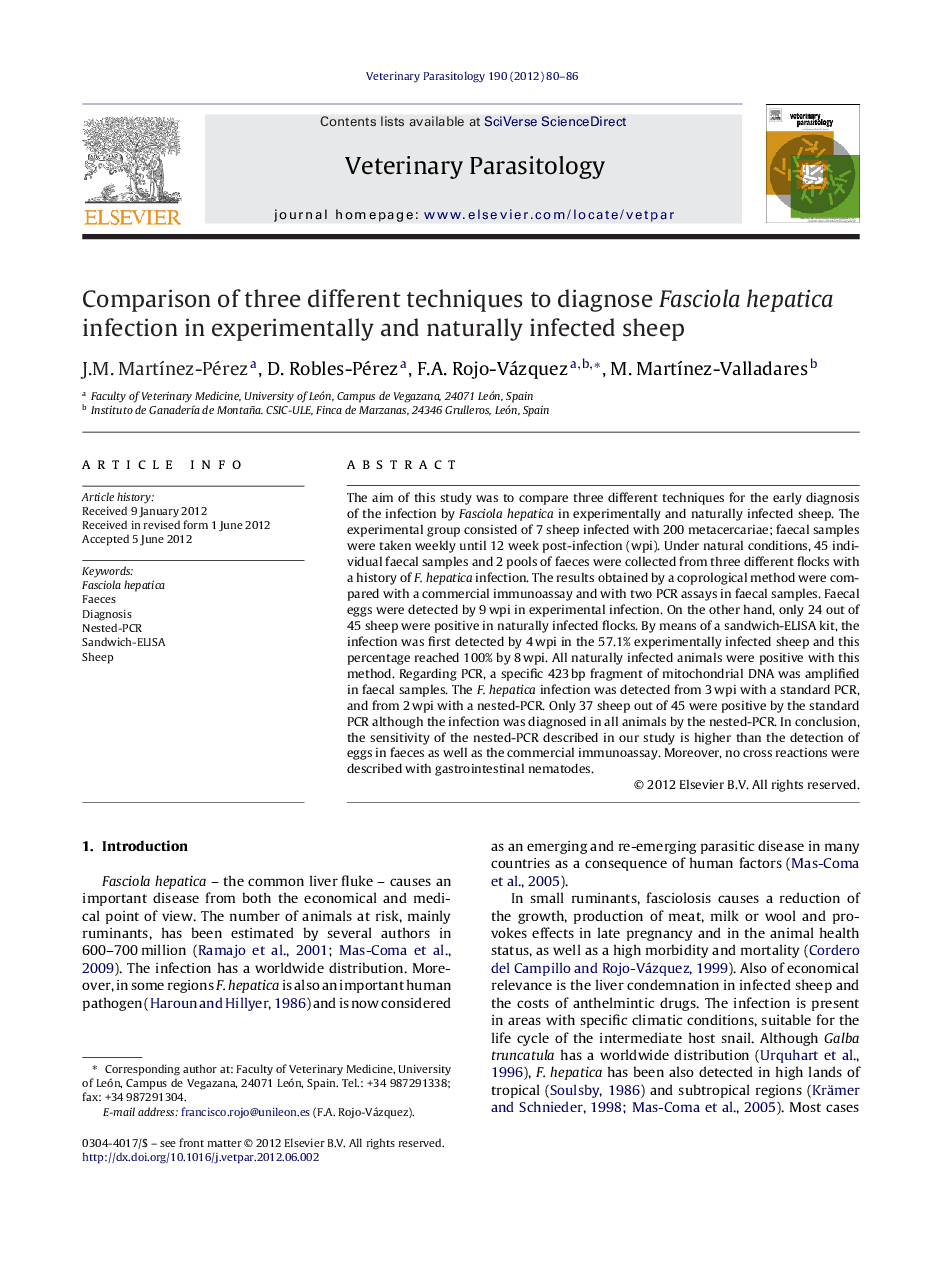| Article ID | Journal | Published Year | Pages | File Type |
|---|---|---|---|---|
| 5804661 | Veterinary Parasitology | 2012 | 7 Pages |
The aim of this study was to compare three different techniques for the early diagnosis of the infection by Fasciola hepatica in experimentally and naturally infected sheep. The experimental group consisted of 7 sheep infected with 200 metacercariae; faecal samples were taken weekly until 12 week post-infection (wpi). Under natural conditions, 45 individual faecal samples and 2 pools of faeces were collected from three different flocks with a history of F. hepatica infection. The results obtained by a coprological method were compared with a commercial immunoassay and with two PCR assays in faecal samples. Faecal eggs were detected by 9Â wpi in experimental infection. On the other hand, only 24 out of 45 sheep were positive in naturally infected flocks. By means of a sandwich-ELISA kit, the infection was first detected by 4Â wpi in the 57.1% experimentally infected sheep and this percentage reached 100% by 8Â wpi. All naturally infected animals were positive with this method. Regarding PCR, a specific 423Â bp fragment of mitochondrial DNA was amplified in faecal samples. The F. hepatica infection was detected from 3Â wpi with a standard PCR, and from 2Â wpi with a nested-PCR. Only 37 sheep out of 45 were positive by the standard PCR although the infection was diagnosed in all animals by the nested-PCR. In conclusion, the sensitivity of the nested-PCR described in our study is higher than the detection of eggs in faeces as well as the commercial immunoassay. Moreover, no cross reactions were described with gastrointestinal nematodes.
